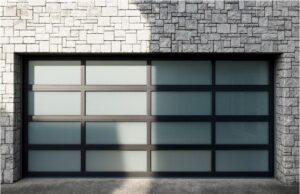November issue of Cityscape focuses on challenges to reusing contaminated land
WASHINGTON, DC – December 3, 2010 – (RealEstateRama) — All across the country, there are environmentally challenged areas called ‘brownfields,’ contaminated properties that often require substantial cleanup before they can be reused for another purposes. In the latest issue of Cityscape, an independent journal published by the U.S. Department of Housing and Urban Development, several scholars are calling for new policies and approaches that could significantly accelerate stalled brownfield redevelopment.
Cityscape is a scholarly journal published by HUD’s Office of Policy Development and Research. The opinions expressed in individual articles do not necessarily reflect the views of the Department.
The November issue of Cityscape includes five articles that report new findings on the redevelopment of contaminated inner-city brownfields. After decades of policy discussions and debate about the effects of the nation’s Superfund law on the inner city, the authors find that brownfields redevelopers confront much larger obstacles than just site decontamination.
Peter Meyer of the private research firm E.P. Systems Group, explores the seemingly irreconcilable conflicts between economic development and environmental improvement. This paper offers a review of some American responses that avoid sacrificing the environment for economic gains and suggests lessons that states and municipalities may learn from each other. One of his major conclusions is that, since current partial brownfields clean-up approaches are not reliable over the long run and will inevitably fail, residents and other neighborhood stakeholders need to be more involved from the start.
Anna Alberini and Dennis Guignet of the University of Maryland examine whether a state Voluntary Cleanup Program (VCP) can support redevelopment of contaminated properties in an urban industrial area; they find that participation in the program may over time substantially enhance the use of inner-city property for industrial and commercial uses.
Marie Howland of the University of Maryland focuses on the impact of site contamination on sales of properties in an industrial area of Baltimore. A researcher at the University of Maryland, she finds that, after the mid-1990s, contaminated parcels sold on the private market fetched prices significantly lower due to contamination and associated cleanup costs. She concludes that, while the private market can address the costs of site cleanup itself, public intervention, through subsidy or even eminent domain, is still needed to overcome the classic problems of obsolete and fragmented land use and urban infrastructure.
Eugene Goldfarb of the University of Illinois-Chicago looks at HUD’s own brownfields policy. He finds that brownfields mitigation efforts could be implemented well but that more guidance and oversight is needed to make the process sustainable over time.
Finally, David Slutzky (University of Virginia) and A.J. Frey (Washington and Lee University) examine the uncertain liabilities of lenders and developers who attempt to redevelop or reuse brownfields even though they did not cause the contamination. The authors offer a two-part proposal: eliminate the liability of “truly innocent third parties” and replenish the Superfund by providing incentives for developers to make voluntary contributions to it.
The complete November issue of Cityscape can be viewed on HUD’s website.
###
HUD’s mission is to create strong, sustainable, inclusive communities and quality affordable homes for all. HUD is working to strengthen the housing market to bolster the economy and protect consumers; meet the need for quality affordable rental homes: utilize housing as a platform for improving quality of life; build inclusive and sustainable communities free from discrimination; and transform the way HUD does business. More information about HUD and its programs is available on the Internet at www.hud.gov and espanol.hud.gov.
Contact:
Brian Sullivan
(202) 708-0685













